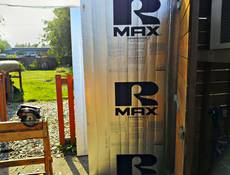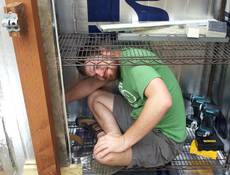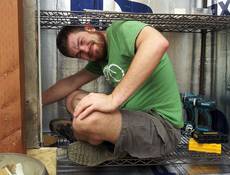Space Shed Fermentation Chamber
I've always wanted to build some kind of space where I could ferment homebrew in a controlled temperature. I've finally made the dream a reality.
I got the taste of temperature controlled fermentation earlier this year when I had a dearth of homebrew. I used the free space in my kegerator to lager an alt that turned out wonderful. Coming from that experience my ultimate goal was to create something that I could lager in. Most importantly I wanted a space to control the temperature of multiple brews in our mild PNW climate.
With that in mind I jumped head first into this project.
The catalyst for this was an old AC unit that my folks gave me. It's a decent size, we kept our ranch style house cool with it in the blazing hot Vancouver, WA summers. The most important feature was it's analog controls which are able to be overridden with an external control unit. I installed the AC in the top of a two door wood shed. One half would be dedicated to beer storage and the other would be for housing the AC and other random bits.
The counter point to the AC was a heater. Initially I used a radiant oil heater. They work well in homes but for this project I found that it was prone to over heating. I swapped that out for a small heater fan which performs much better for this purpose.
Next I went to Lowes and found the thickest rigid foam insulation they had. It happened to have a foil covering which I think adds to it's radiation insulation. I also grabbed foil tape to match the insulation. When I got home I set out to cover the inside of the shed with the insulation. I went nuts with the tape. I covered every crack on the inside and sometimes the outside and all of the places where bare wood was present in the cool space. It gave it a space age look, hence the name.
The last bit of the build came a week later when I got the temperature controller in the mail. It was the "eBay" type which meant that it was shipped from Hong Kong and came with less than fluent instructions. Installation was simple though. Basically I wired a two sockets to the controller. One socket was dedicated to cooling the other to heating. When the temperature is outside of the set range the controller activates the appropriate socket which turns on the AC or the heater.








